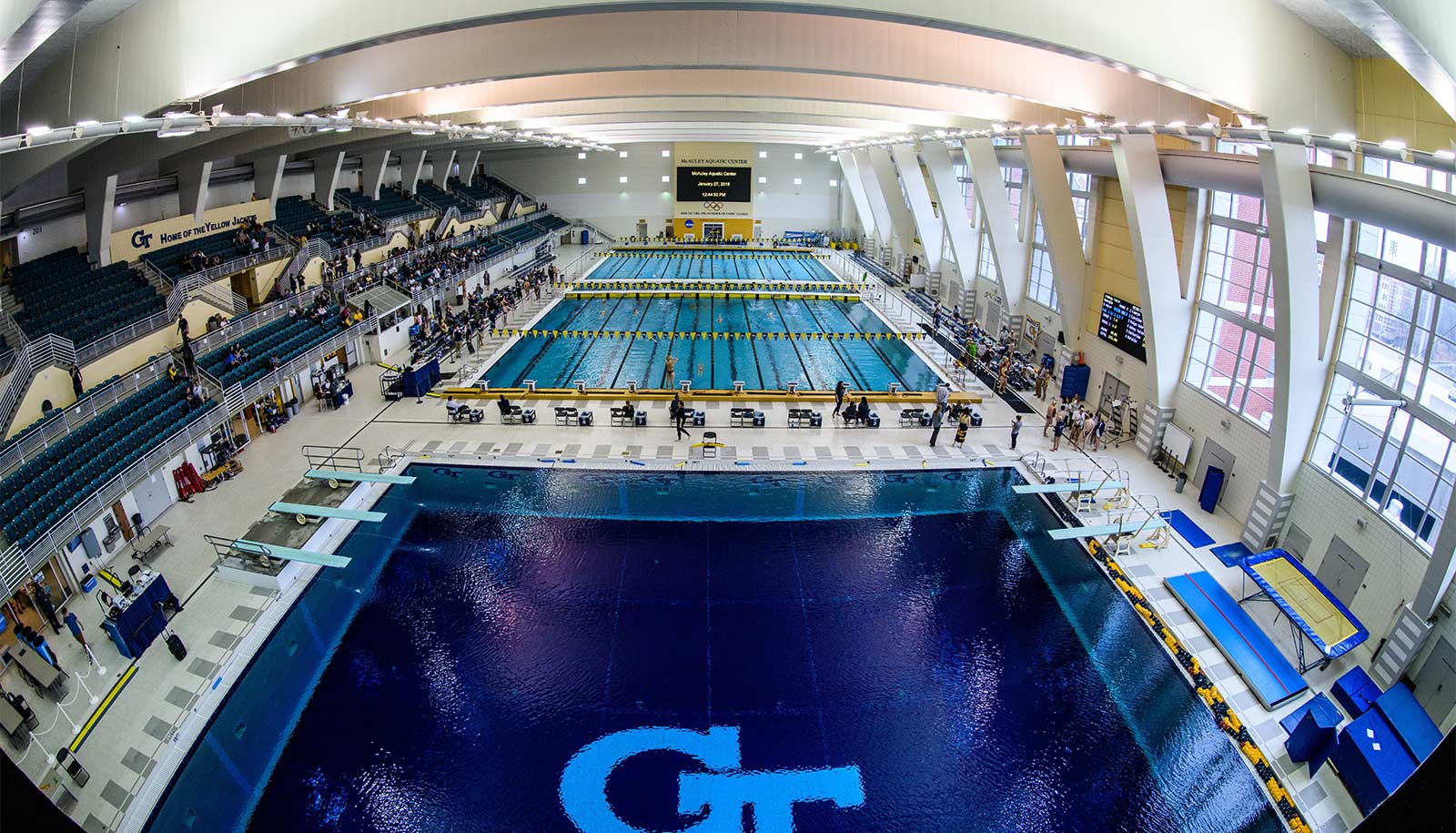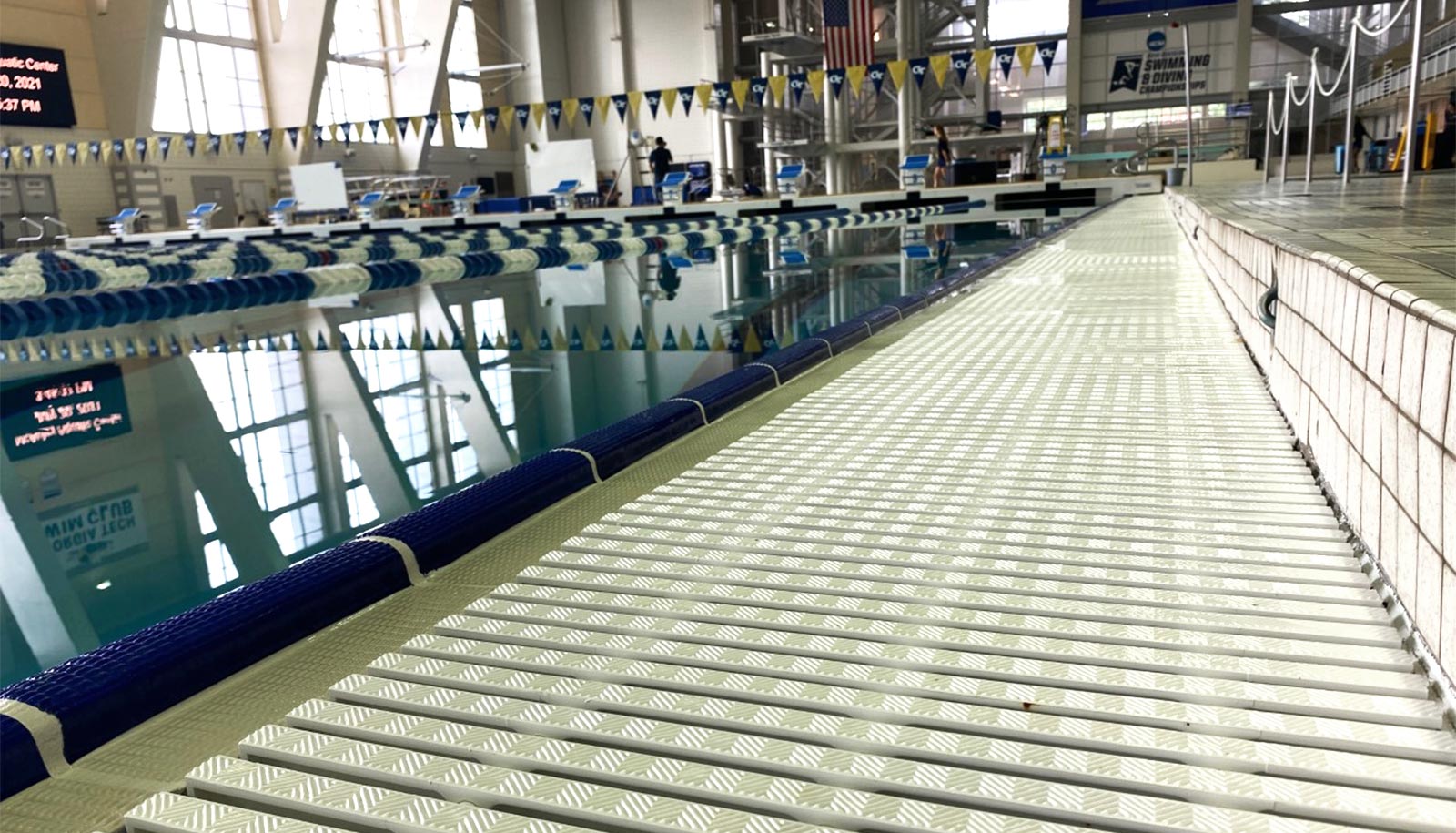
It’s not just fit, strong, and elite athletes competing at the Summer Olympics in Tokyo that make a swimming pool fast. Structural engineering and materials used at the venue factor in, too.
Everything—air flow, depth, and more—are in place with speed in mind.
In the United States, there’s no greater example than the McAuley Aquatic Facility at Georgia Tech. The facility hosted the Olympics in Atlanta 25 years ago. The pool continues to be one of the fastest in the world.
“There are three primary reasons why the Georgia Tech pool is still among the fastest, even after a quarter century,” says Jud Ready, an adjunct professor in the School of Materials Science and Engineering. “Two are at the bottom of the pool and the other is at the sides.”

The first is the depth. The McAuley Aquatic Facility pool, just like Tokyo’s, is 3 meters deep (about 9.8 feet).
“When you’re talking about 0.01 of a second deciding a gold medal instead of a silver, any and all extra friction matters.”
“When swimmers dive in to start a lap or strike the surface with their hands and feet, the compression waves they create rebound when they hit the bottom of the pool,” says Ready, who is also a principle research engineer at the Georgia Tech Research Institute.
“If the pool is too shallow, the wave energy is able to bounce off the bottom and reach their competitors, negatively affecting their speed. Three meters is deep enough that the reflected wave cannot reach the surface.”
The second reason is the pool’s return jets, which are built into the bottom of the lanes. A typical hotel or backyard pool installs the jets on the side walls. But recirculating about a million gallons of water from jets every four hours would create a tremendous current either favoring or opposing the swimmers. So the facility returns the water by spreading it along the bottom of the pool through the use of rosettes.

“All that water needs somewhere to go, and the gutter system is the third reason why our pool was built to be fast,” says Ready. “When swimmers produce waves that hit the side of the pool, the oversized gutters capture water rather than bouncing that energy back to the athletes and slowing them down.
“When you’re talking about 0.01 of a second deciding a gold medal instead of a silver, any and all extra friction matters.”
The gutter system must be wide and deep, which is important at the beginning of a race. When all the swimmers hit the surface at the same time, the pool overflows, not unlike dropping several ice cubes into a full glass of water. The gutters can handle the overflow because of the oversized dimensions.

“Water goes in, but doesn’t come back out,” says Ready. “If the gutter system was shallow, it would fill up, bounce water back into the pool and make the surface choppy. This would create resistance against the swimmers, slowing them down.”
Other things at the venue aren’t as noticeable. For instance, the air systems are constructed to stream air down in a laminar flow from the rafters, across the water surface, and toward large fans installed on the opposite end of the pool. This removes chloramines and keeps the air fresh and odor free during competition.
“The water is also cold: about 77 degrees,” says Ready. “Olympians are working hard and generating heat during competition. Warm water would quickly fatigue muscles, so the temperature is kept lower than what is comfortable for a typical family day at the pool.”
Swimsuits have also come a long way in Olympic competition. Swimmers wore wool suits in the early Games, then went to silk in the 1930s. Nylon and Lycra would soon follow. Suits that mimicked shark skin were unveiled four years after Atlanta at the Sydney Olympics of 2000.
“A controversy occurred in the Beijing Games when non-textile polyurethane suits were introduced,” Ready says. “Numerous records were smashed because the suits greatly increased buoyancy and reduced drag. They’ve since been banned, and swimmers in Tokyo are in microfibers of nylon and spandex.”
Source: Georgia Tech
The post What makes an Olympic swimming pool super fast? appeared first on Futurity.
from Futurity https://ift.tt/3yc75lT
No comments:
Post a Comment